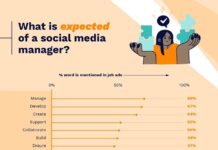The shift from a broadcast to a networked means of communications is completely changing the dynamics of publishing. Rather than establishing and controlling discrete publishing channels to broadcast to different audiences, content distributors need to learn to engage different audience types within a single “digital space.” In the context of realtime social networks, the only way to ensure your content is reaching and engaging the right audience is to understand the conversation that your target audience is having.
This makes things a lot more complicated for publishers and marketers. But it also offers incredible opportunities to target based on context and content, and, if done right, it greatly increases the levels of engagement you can achieve.
In a new report called Engaging News Hungry Audiences Tweet by Tweet, SocialFlow’s Research and Development team, headed by Gilad Lotan, dissect bit.ly and Twitter data of the followers of 6 major news Twitter accounts (@AJEnglish, @BBCNews, @CNN, @TheEconomist, @FoxNews and @nytimes). Their analysis is based on over 20 million tweets posted by about 7 million users.
Social Flow (which was a sponsor at our Realtime NY 11 conference) looks at the data in a number of ways. First they report some straightforward, who-is-the-audience data: the overall audience size, how big is the intersection between the audiences, how active is each account’s audience on Twitter based on its average number of friends, followers and tweets sent.
Where things get really interesting, however, is when the team digs into things that are unique to networked audiences: levels of engagement as measured by both clicks and retweets, and the topics that are being discussed by each audience. It’s here that the data reveals some stunning and crucial insights into how audiences on realtime networks behave.
1. Audience size is not a predictor of audience engagement. We’ve heard this one before, and this report confirms it. The New York Times has the largest audience on Twitter, as measured by number of Twitter followers. But The Economist generates far more clicks per tweet. Even though the size of The Economist’s audience is less than a third of the New York Times’, it is generating hundreds more clicks per shared link.
2. Clicks and retweets are completely different types of engagement, and don’t necessarily go hand-in-hand. The Economist’s Twitter followers are more likely to click on links than Fox News or Al Jazeera English Twitter followers. But AlJazeera’s audience is more likely to share content by retweeting it.
Which is the more important measure of engagement? Retweets indicate a high level of trust and the potential for a larger audience through content-sharing. But clicks are crucial to driving earnings and sales for brands and publishers. It’s important to be clear about which you’re trying to accomplish.
3. Audience = Network + Topic + Timing. Realtime networked audiences are transient. They are quick to jump from one conversation to another. To earn the attention of an audience, publishers and marketers need to understand the topics being discussed by a networked audience at any given time. According to SocialFlow, this means “having realtime information about topics being discussed by a networked audience at any given time yields high potential for engagement.”
Realtime data is powerful stuff, and we’re just at the beginning of learning how to understand and use it. The actions that a networked audience takes yields far more direct data than we were ever able to get on audiences on TV, radio, print or even most spaces on the web. This includes both long-term historical data, such as click and retweet patterns, and realtime data such as topics and conversations. Both types of data can, and should, be used to inform content strategies and marketing planning.
Can You Identify the Audience?
Below are a couple of details from the network graphs of topics being discussed by @FoxNews followers and those being discussed by @AJEnglish followers. In each case, I’ve applied the same level of zoom to the image, and centered it on the topic “tcot” (short for “top conservatives on twitter”). Larger circles means the term appeared more frequently, circles that are closer together indicate that the terms appeared in related tweets. Brown circles are Twitter accounts that were being frequently retweeted.
Can you identify which detail is from the Fox News audience graph, and which from Al Jazeera English? I’ll post the answer in a comment next week!
Graph #1: Detail of one of the network graphs created by SocialFlow, centered on “tcot”:
Graph #2: Detail of another one of the network graphs created by SocialFlow, also centered on “tcot”:


